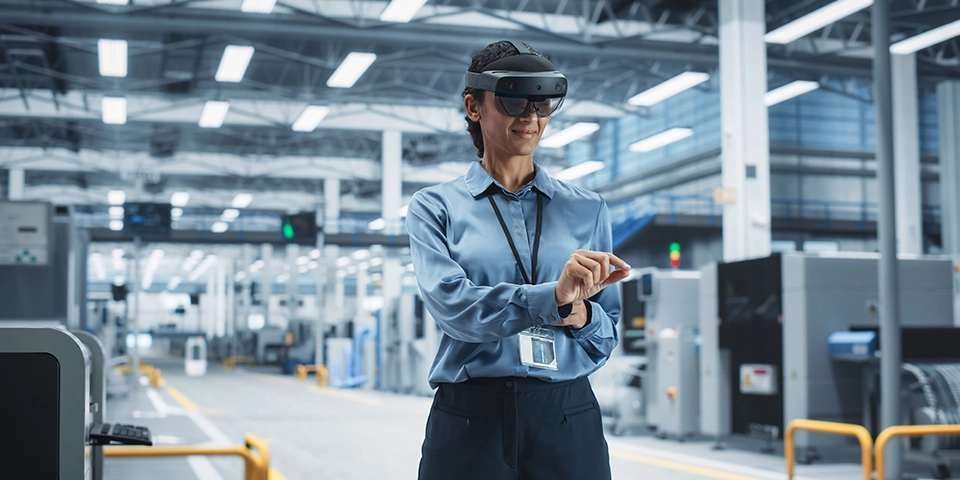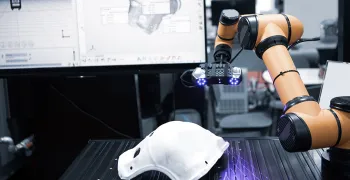Let’s be honest – when was the last time you eagerly flipped through a product manual? While those humble information booklets have served their purpose in the past, for most buyers today, they are a source of frustration. But what if setting up your new electronic device felt more like a game than a tedious chore?
In digitally-charged markets where customer delight is a key differentiator for brands in every industry, immersive technologies can give product manuals their long-overdue makeover. From helping users watch steps in 3D to providing personalized directions through interactive layers, the future of customer support is now being built in a virtual world. Technologies such as Augmented Reality (AR), Virtual Reality (VR), Mixed Reality (MR), and Extended Reality (XR) turn static information into lively, user-centric content.
Before delving into how they transform product and instruction manuals, let us quickly look into the distinct characteristics of each of these technologies:
- AR superimposes digital elements onto the real world, providing virtual instructions even when users see their physical surroundings.
- VR immerses users in a 360⁰ virtual environment, simulating entire product setups and explaining scenarios in a managed distraction-free space.
- MR integrates real and virtual worlds in real time, interacting with holographic content anchored to physical objects suitable for hands-on learning.
- XR is an umbrella term for all three technologies, providing a flexible toolkit to design seamless, immersive experiences.
Why is Adopting Immersive Technologies Challenging
Yes, it is complex. Deploying AR, VR, MR, and XR to reinvent product manuals is challenging, particularly for small and medium enterprises (SMEs). Cost is a constraint. The financial demand of creating interactive 3D content using specialized hardware, custom apps, and audio plugins can be steep.
Equally daunting is the shortage of in-house expertise for XR development. When an organization aims to craft compelling immersive manuals, its workforce must understand user experience design, simulators and haptics, interaction logic, and platforms like Unity 3D and 3D Max. Without such capabilities, the full value of interactive digital booklets cannot be unlocked.
Some companies find content scalability difficult. Unlike traditional manuals that are easy to update and localize, the ones designed with AR-VR-MR often need reprogramming or re-rendering, even for minor modifications slowing down deployment and increasing overheads. Lastly, integration with existing systems, from customer service portals to product packages, remains underdeveloped, making it hard to go beyond pilot projects.
How Technology Services Accelerate Immersive Adoption
As businesses make conscious efforts on digital transformation, self-help tools, and technology service providers are bringing the spectrum of AR, VR, and MR tools within their reach.
Companies that lack the resources to start from scratch may use modular XR platforms equipped with templates, libraries of 3D assets, and user-friendly interfaces. Such solutions reduce development time and make it easier to create immersive product manuals without a full-scale tech team. Organizations also have the option of no-code, low-code tools that allow product and customer support teams to contribute directly to manual design without deep technical skills. Businesses with thinner budgets can use subscription-based content models to handle everything from immersive content updates and localization to device compatibility and version control.
Companies need next-level technical capabilities and industry-specific expertise to upgrade immersive product manuals from simple walkthroughs to high-fidelity information sources with interactive simulations. For instance, Unity 3D’s powerful real-time engine is used by service providers to craft interactive, device-agnostic AR/VR manuals containing 3D models, animations, and UI layers tailored for consumer engagement and onboarding.
Experienced technology partners also customize manuals using industry-specific workflows, leveraging IoT data, CAD-to-AR pipelines, and compliance-ready visuals to meet the unique operational needs of different sectors. In addition, simulation frameworks and haptic feedback integration can replicate real-world product interactions for tactile and empirical learning, which is valuable for training manuals.
Managed service providers also offer pilot runs bespoke deployment plans, and train in-house teams to scale and customize AR/VR-based manuals. As per business priorities, they can support phased rollouts that begin with a single product category or use case to demonstrate ROI and then scale ahead.
Why it Matters: Business Benefits of Immersive Product Manuals
Designing manuals with AR-VR-MR-XR tools is not just a tech upgrade; it is a competitive differentiator with advantages like:
- Improved comprehension: Immersive manuals shift customer experience from passive perusal of text and images to active, visual learning. Users get content in 3D interactions to visualize product components in more detail, follow animated sequences, and receive real-time AR instructions, reducing setup errors and onboarding time.
- Higher customer satisfaction: Users feel less frustrated and more empowered with intuitive and interactive guidance, implying fewer support calls and product returns.
- Precision training: In domains like healthcare, automotive, and electronics, where precision matters, VR simulations train users safely without needing physical prototypes.
- Context-aware assistance: AR-MR technologies recognize real-world scenarios to deliver stepwise overlays tailored to a user’s immediate context. For instance, when a customer is trying to troubleshoot an appliance, instead of rummaging through pages of text, they can point their AR-enabled device at the physical machine, and relevant information would appear in real time.
Looking Ahead
Eventually, immersive technologies do not just transform product manuals; they enhance brand perception, strengthen product loyalty, and position companies as innovation leaders in their markets.
As products become increasingly multifaceted, traditional production and instruction manuals will no longer be able to explain their features and functionalities effectively. Technologies like AR-VR-MR-XR redefine user guidance with instant support.
Businesses that start designing their future-ready product manuals now will, therefore, continue to seamlessly deliver the experiences expected in the digital age.




